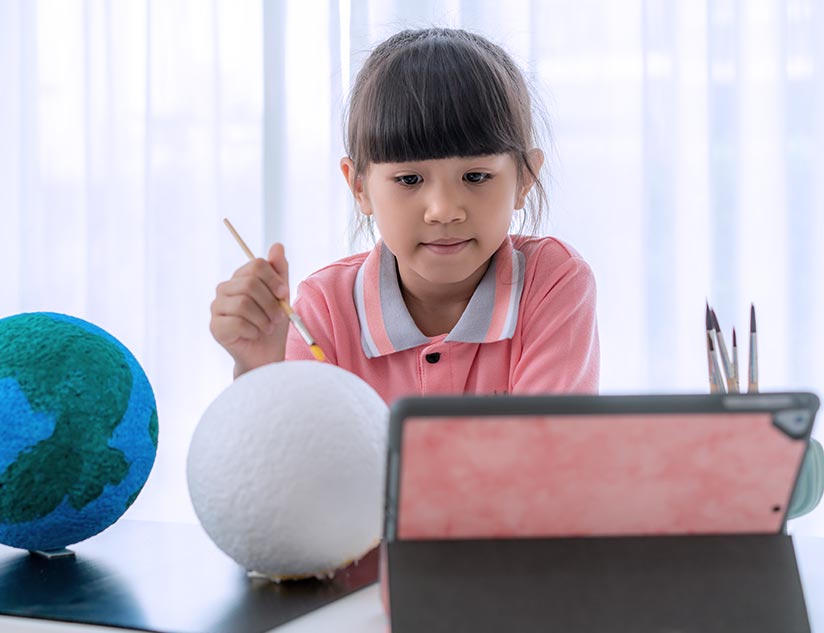The pandemic has disrupted traditional classroom-based learning, which was crafted on the Industrial Revolution model, which has also been called the “factory model” of schooling. Even before the pandemic, the old school system of passively learning information by rote in the absence of context was already losing its relevance. In order for students to have skills such as problem-solving, critical thinking and collaboration, among others, curricular reform is needed globally.
In recent times, the adoption of Sustainable Development Goal 4 and the Education 2030 agenda are examples of initiatives and research in this context. There is now a strong imperative for countries to ensure that students gain skills in areas like human rights, global citizenship, and gender equality.
Project-Based Learning (PBL) can equip students to become independent thinkers and problem solvers. Two studies by the University of Southern California and Michigan State University revealed that project-based learning is an effective strategy for all types of students. It helped students outperform traditional curricula across grade levels and socioeconomic and racial groups. With extensive adoption of technology in classrooms in the pandemic, PBL can be seen as an effective extension of the application-based pedagogy that educators are keen on.
Project-Based Learning and Role of EdTech
Among the huge potential that technology holds in future classrooms, the support of Project-Based Learning (PBL) is a prominent one. Within PBL, students have the flexibility to use any medium suitable for research, 3D models, online libraries of standard-aligned projects, with rubrics and resources such as website links, videos, and documents. They find innovative solutions to complex real-world problems and demonstrate their learnings through presentations or reports.
Some areas where digital learning platforms can contribute towards this pedagogy include:
A Blended Approach to Learning
PBL can be considered an ideal ingredient in the flipped classroom model. For instance, if students learn through instructional videos at home, classrooms can be reserved for projects and field trips. With the help of various tools like VR, interactive whiteboards, and more, teachers can explain tough math or chemistry concepts to students more effectively. They can centralize key project data after students have been out on field trips. This supports an immersive and experiential learning experience.
Greater Focus on Collaboration
Teamwork and collaboration are crucial to PBL. In-built collaboration tools in digital learning platforms can make it easier for students to work on projects together. They can brainstorm strategies together, ask each other questions, and find resources online. With various project management tools, all resources can be collated in one place.
Efficient Assessment
Multiple effective evaluations and assessment opportunities are available to teachers through EdTech tools. It allows students to work independently, demonstrate capabilities, and gain instant feedback and grades. Apart from testing knowledge retention, assessments provide teachers a chance to know each student better and document their development.
Sharing of Learning
When it comes to sharing what they have learned, especially with a public audience, students need choices. Digital options can help students give multimedia presentations, which include videos, images, infographics, podcasts, and more. They can include content like polls, collaborative discussion boards, virtual field trips, and more.
PBL and technology enable students to take control of their learning, which is the first step towards becoming lifelong learners. It accommodates students with a broad range of capabilities, with varied learning styles.
The Role of Teachers in Driving PBL
We see the potential PBL and tech in equipping teachers to inculcate 21st century skills in students. Using projects they can motivate students and create a “need to know” attitude in them, which is similar to inquiry-based instruction.
However, studies show that implementing PBL needs extensive planning and professional development of teachers, along with a supportive environment, strategies, and tools for success. In 2020, teachers had to scramble to online platforms overnight, to ensure education continuity, and make learning meaningful. The question is how to make teachers feel prepared when switching to this more student-centered approach.
By implementing PBL during the teacher preparation program, pre-service teachers can develop an understanding and good practice of this model. Today, there is a wealth of online resources for teachers to start exploring the possibilities. Examples include “hard scaffolds” that can strategize processes for teachers and students. New-age tools for assessment diminish the need for teachers to regulate and supervise students every step of the way. It thus fosters agency and competency in students.
Future of EdTech in PBL
PBL effectively bridges the gap between theoretical and real-world applications. Technology will increasingly play a crucial role in this model. The responsibility of equipping teachers and students with tools lands on the shoulders of educators, as well as EdTech platforms. In that regard, the inequity in education access is one grave problem highlighted by the pandemic.
If we focus on PBL creating a generation that is innovative and adaptable, technology has to be made accessible for all. Offline learning tools and learning tools for the specially-abled will have to be made available.
A growing body of research indicates the positive impacts of PBL in schools. When technology is further used to augment these efforts, the benefits are enhanced.
MagicBox is built with a special focus on easing education delivery and learning. To know more about how the platform can support PBL, contact us today.








